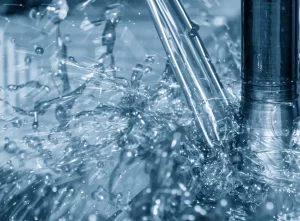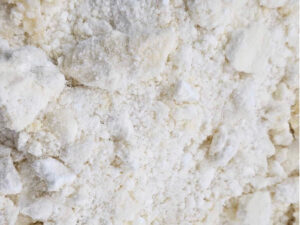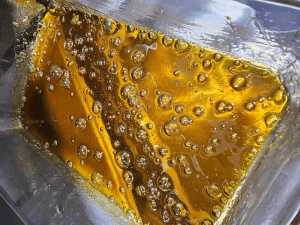
Streamline Your Workflow with Advanced BHO Extraction Equipment
Streamline your processes with BHO extraction equipment featured in ‘Streamline Your Workflow with Advanced BHO Extraction Equipment.
Successful separation of highly prized plant compounds from biomass through hydrocarbon extraction is achieved through extraction facility best practices. This includes handling the plant biomass with care, using the most appropriate extraction technique, training employees to use the equipment correctly, regularly servicing the machinery, and recognizing opportunities for automation.
Botanical extraction is a highly scientific and complicated process. Hardly a hobby for weekend enthusiasts, extracting molecular compounds from plant material requires the proper equipment, a well-maintained operation, and a robust level of skill and expertise.
With the right equipment, organization, and know-how , your operation has a far greater chance at success. However, there are a few do’s and don’ts in the extraction industry that might not be widely known, even to botanical extractors and extraction company CEOs.
That’s where we come in. Illuminated Extractors has been equipping the botanical extraction industry with purpose-built machinery since the early days of the industry. As such, we know what actions inspire success and which mistakes can decimate a company’s bottom line.
With that, here are the do’s and don’ts of botanical extraction.
While the plants used in botanical extraction are extremely robust, the special compounds that make them highly desirable in the consumer market are somewhat fragile. These compounds—cannabinoids, trichomes, and terpenes—are what you’re after in the extraction process. Damaging them will render your final product worthless in the marketplace.
Tips to protecting plant material headed for extraction:
Extraction is the first step in separating the desired natural products from the raw plant materials. However, not all extractions are created equal. There are a number of different extraction methods. Each one interacts in unique ways with the biomass, and that interaction produces a variety of different extract products.
Different Plant Extracts:
Different Extraction Methods:
Conducting training exercises—for both you and your team members—goes a long way in keeping the extraction operation running smoothly and safely. Properly trained employees know exactly how to handle hazardous material and are well-versed on all the ins and outs of the machinery used for extraction.
Ensuring everyone in the facility has expert knowledge on the extraction equipment is probably the most important part of training.
If you work primarily in closed-loop hydrocarbon extraction, bringing in someone who is an expert in solventless extraction doesn’t make business sense. What’s more, teaching someone the basics of ethanol extraction when you specialize in CO2 extraction is a waste of everyone’s time.
Train smart and train often.
Not only does regular cleaning and maintenance of botanical extraction equipment keep everyone safe, it also ensures optimal performance and maximum yield. Proper upkeep is crucial to maintaining a long-term foothold in the extract marketplace, so you need to know when to clean and how to clean, as well as when to schedule maintenance and when to replace certain parts.
Not only does Illuminated Extractors supply you with the equipment you need for a host of extractions, we can also help with service and maintenance plans.
If botanical extraction was as easy as pressing a big red “on” button and walking away until a loud buzzer goes off, more people would do it. The truth is, professional extractors must have an intimate knowledge of extraction and the machinery, along with the processing power of your hydrocarbon extraction machine. This empowers you to spot opportunities for automation.
Automating certain processes of extraction helps:
Realizing the fruits of a successful botanical extraction is all about avoiding the most common mistakes made in lab facilities. Some mistakes merely cause a small hiccup in the process, while others can destroy months worth of hard work and flush your capital down the drain. Regardless of the size of the error, it’s best to avoid these “don’ts” entirely.
All scientific efforts conducted in a lab setting require a delicate balance of chemicals and materials. In botanical extraction, the material-to-solvent ratio must be calibrated perfectly, otherwise you could end up with a final product that is either overwhelmed with residual solvents or lacks the potent punch of plant compounds.
For a closed loop hydrocarbon extraction using butane, for example, it’s recommended to use five pounds of solvent per pound of material.
When you cook dinner at home and serve it on plates with utensils, do you clean all of the dinnerware after the meal is finished?
Of course you do! Preferably with soap and water. That’s because no one wants to eat with dirty dishes and forks.
It’s the same concept when it comes to solvent and extraction equipment.
When you run an extraction, solvents become cloudy with plant biomass and equipment gets caked with the same residual material. If left uncleaned, this filth will compromise the next extraction. You’ll end up with a final product that gets funkier and funkier with each extraction. Pretty soon you’ll be known as the extraction company with the dirty botanicals.
And that is not good for business.
Once you’ve extracted plant compounds from the biomass, it’s crucial to test the final product before it reaches any consumers. Post-extraction products can benefit greatly from third-party testing, as it safeguards your business and protects the consumer.
Testing extractions:
A successful third-party test will net you a certificate of analysis (COA), which verifies the purity of your product. This is an immense help when it’s time to stock those dispensary shelves
This falls into the category of knowing exactly how your equipment functions, what type of extraction you’re performing, and what final product you’re looking for. Botanical extractions are fickle things. Too much solvent, not enough solvent, too much time in the extractor, not enough time in the extractor—these can all wreak havoc on your botanical extraction.
What’s more, certain extraction machines take longer than others. If you don’t have the crucial knowledge of your equipment’s run times, you could end up decimating your entire batch of products with an unforced error. Work with professionals in extraction to learn the correct extraction time for your equipment and how long it typically takes for each type of botanical extract to reach its natural conclusion.
Young consumers can spot a phony a mile away, especially consumers interested in botanical extractions who are tuned into industry trends. Extraction industry leaders have their finger on the pulse of what’s hot—and what’s not—in extraction. When a new trend emerges, extractors that live on the cutting edge can seamlessly integrate such trends into their daily operations.
It’s also important to know when a trend is losing steam. This keeps you ahead of the curve and gives you time to quickly pivot away from yesterday’s fad in favor of the next big thing.
Keeping up with extraction trends:
But how does one keep up with extraction industry trends? Some tried and true methods include:
The extraction industry is dotted with obstacles and pitfalls. More than that, it’s studded with opportunities for market success and the highest of highs. Protect your interests by knowing what to do and what not to do. But most importantly, collaborate with industry professionals that are keenly aware of how to achieve real growth in extraction.

Streamline your processes with BHO extraction equipment featured in ‘Streamline Your Workflow with Advanced BHO Extraction Equipment.

Illuminated Extractors Cost Savings

Illuminated Extractors Cost Savings

Illuminated Extractors Cost Savings

Illuminated Extractors Cost Savings

Illuminated Extractors Cost Savings
It’s time to start your extraction journey with Illuminated Extractors.
Certified in all 50 States
All Illuminated Extractors extraction models have received Technical Report Certification authored by Pressure Safety Inspectors (PSI). All models have been peer-reviewed for Safety and compliance in all 50 states. Please contact us for more information about certifications for your local AHJ.
Illuminated Extractors LTD – All Rights Reserved. Copyright © 2017-2024. Privacy Policy | Terms & Conditions